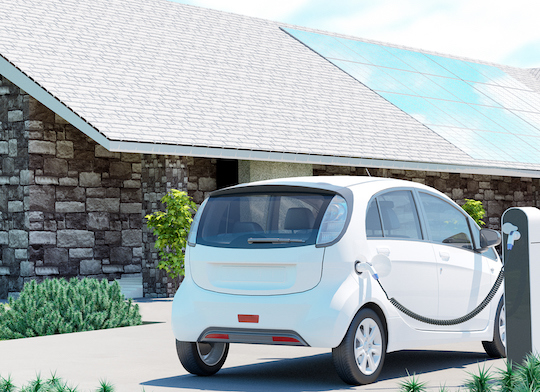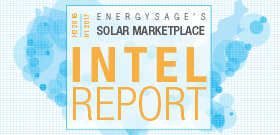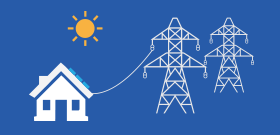Solar, the gateway to electrification
Adoption of distributed generation solar energy systems has exploded in recent years. As prices for solar systems decline and new financing solutions hit the market, U.S. consumers have embraced these technologies as investment opportunities, a means of reducing carbon emissions or simply an interest in trying out cool new technology.
While electric utilities may see consumer adoption of solar energy systems as a threat to their business, solar will actually be an important driver in unlocking mass market demand for a broad range of electric systems, including those used for air heating and cooling, domestic water heating, and transportation. Electric utilities who recognize this shift towards electrification now will be the ones to come out ahead in the future, even if they are challenged in the short term by lost revenue. If solar customers are more likely to adopt other electric-powered systems, then solar may very well be the “gateway drug” to an electrified economy!
Going solar drives energy awareness
While most consumers do not often think about where their energy comes from, those who have gone solar have a keen understanding of their energy use, what it costs, and where it comes from.
The solar sales process is an intensive learning experience that often starts with an education around historical electricity consumption (measured in kilowatt-hours or kWh) and the costs associated with this energy usage. After completing discussions with multiple solar installers, signing a contract for installation and seeing a solar energy system installed and powering your home, solar customers have a higher level of comfort and familiarity with electricity than most consumers.
As a result of the intensive solar shopping process, individuals who have gone solar are tuned in to their home’s energy use, and tend to consider and analyze energy-related purchases more seriously. Powering other significant home appliances with electricity from their solar array becomes a goal for many homeowners. As a result, solar customers are far more likely to go on to purchase other systems powered by electricity as well, such as heat pumps and electric vehicles.
Heat Pumps
Advancements in heat pump technologies have produced new highly efficient air heating and cooling products powered by electricity. While there are many applications of heat pump technologies, ductless mini-split systems are the most common. These products can be easily installed into existing homes at a reasonable price, offering significant financial savings for homeowners who want to move away from traditional fuel sources such as oil or natural gas.
When consumers connect the dots and learn that their solar energy system can power their home heating and cooling, many become quite interested in exploring these types of systems. Based on anecdotal data from several large diversified energy installation companies, about 30%-60% of solar customers also go on to install heat pump technologies (varies by region). Depending on the customer’s location, these systems can add 3,000-6,000 kWh of annual load for a residential customer.
Electric Vehicles
Electric vehicles (EVs) are growing in popularity. As more options become available and more charging infrastructure comes online, this market will grow rapidly for years to come. Early adopters of these systems are attracted by the cutting-edge technology and the ability to reduce emissions, but a strong positive factor in EV purchasing is the ability to power transport with solar energy. While it’s difficult to discern whether one technology is driving the acquisition of the other, it’s been reported that 28% to 40% of EV drivers (varies across EV and PEV segments) already had solar panels on their home when they switched to an electric vehicle. It may be that once consumers are able to generate their own electricity from solar, they look to find ways to leverage this renewable resource in other areas of their lives.

Solar panels produce very clear economic value for consumers. By comparison, the economics of EV driving are somewhat murkier and require complex fuel cost and vehicle efficiency calculations to estimate savings. Solar can act as a good bridge technology that helps consumers familiarize themselves with energy math, while also getting them excited about the potential to lower fuel costs by switching to electricity for their transportation needs.
Since electric vehicles consume 2,000-5,000 kWh of electricity each year for homeowners, the addition of these vehicles may push consumption over the amount offset by a solar energy system. As a result, these customers will rely on utility-generated electricity to make up the difference, bringing back some of the revenue that the utility might lose from the initial solar installation.
The future of electrification
Although electric utilities may experience some lost revenue through solar defection in the short term, the adoption of solar energy systems can be a catalyst for accelerated adoption of other electric-powered systems in the home. These new electric systems are more efficient and save consumers money through reduced fuel costs. The result is a shift away from carbon-intensive fuel sources and potential opportunity for electric utilities as they see demand for electricity coming from the installation of these new electric technologies.
An opportunity for utilities
Helping consumers move toward greater electrification of their homes and transport vehicles represents a significant revenue opportunity for utilities. While solar energy system adoption within a utility territory may impact revenue in the short term, the energy awareness created by these systems may result in the adoption of additional electric-powered systems that actually add more electric load on the grid in the medium term. In addition, utilities can profit from the sale of solar energy systems by leveraging marketplace platforms, such as that offered by EnergySage, to earn transaction fees from introducing customers to installation companies.
Utilities therefore are faced with a tremendous opportunity that may initially seem at odds with traditional industry thinking: Actively educating customers about the benefits of solar energy and assisting them through the solar shopping process can drive significant revenue and margin growth in the future.
Utilities should embrace this opportunity and invest in the tools and resources that their customers need to explore solar energy and other electric-powered products. Doing so will position the utility as a trusted energy advisor, generating customer loyalty and satisfaction, but also creating many downstream opportunities to sell products and services to these highly engaged consumers. In this light, the adoption of solar energy systems may be less of a threat and more of an opportunity for progressive utilities to capitalize on. Solar energy can be the gateway drug to a more electrified economy that represents a significant long-term growth opportunity for utilities.
About EnergySage
EnergySage operates the leading online marketplace for solar and other related energy products. Developed in 2012 with funding and support from the US Department of Energy, EnergySage is dedicated to simplicity, transparency and choice. A comprehensive, vendor-neutral suite of online tools and resources help consumers research and shop for solar with confidence.
The EnergySage Marketplace puts consumers in control by allowing them to manage the sales process on their terms and without having to share private contact information with installers. The Marketplace presents property owners with multiple online quotes from pre-screened installers in a unique apples-to-apples comparison format that educates consumers and empowers them to get a fair deal. EnerygSage Advisors provide impartial support throughout the research and shopping experience via phone, email and instant chat.
In addition to making these tools publicly available, EnergySage works with a range of organizations – from utilities like National Grid to state agencies like The Connecticut Green Bank – to develop customized resources and solutions for engaging consumers on complex energy topics and for facilitating high-impact programs.
Want to learn more about what makes EnergySage different?
Contact the author:
John Gingrich
SVP, Strategic Partnerships
john@energysage.com
617.453.8924
EnergySage is the partner of choice for leading organizations. View our partner overview PDF for more detail about how EnergySage partnerships work.




